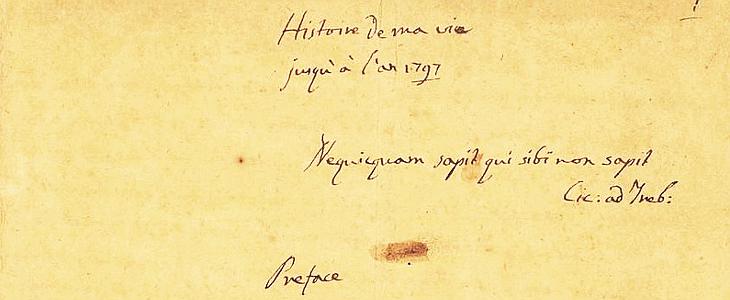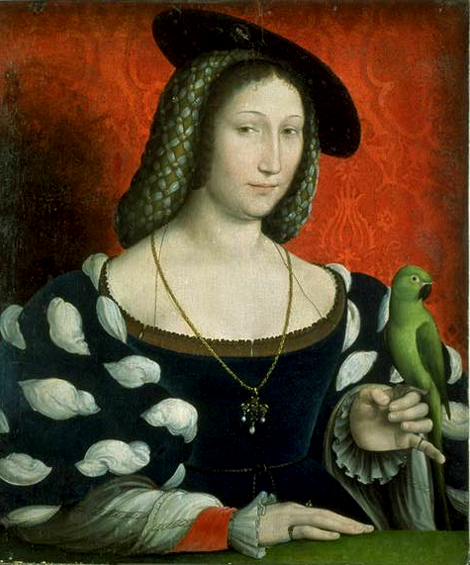Categories:
History of Western Erotic Literature

Erotic literature has been around since pretty much the origins of writing itself. The genre is still seen as controversial by many, but was heavily censored in previous centuries like during the medieval times when sex and sexually oriented issues were regarded as sinful and forbidden. Regardless, it has continued to wane stronger, both in the sheer amount of publications and quality of context.
Erotic literature comes in many forms from short sex stories to memoirs, autobiographies, sex manuals guides, novels, poetry to basically any work of fiction that has a sexual theme. In its formative period, it represented (as with other sexual works) the rebellion against the societal curfew placed on free expression of sexuality. As a result throughout its history, it featured lustful, sadomasochist, fantasia, fetish, and orgy like themes, which critics have gone further to describe as obscene.
In the beginning
The early days of erotic literature were heavy handed with themes of lust and seduction. Of all publications in that time, perhaps the most outstanding for its depth of content, boldness and outright disregard for standing norms and morality was Giovanni Boccaccio’s ‘Decameron’. The book, an ironic depiction of sexual extravagance displayed by monks and nuns would go on to be a prohibited title in several countries on the grounds of obscenity.
The 15th century saw the rise to prominence of the Aeneas Sylvius Piccolomini’s bestseller ‘The Tale of Two Lovers.’ It is believed (by some) that this work was an excerpt from one of the sexual escapades of Emperor Frederick III’s chancellor Kaspar Schlick. Aeneas who would later become Pope himself, demonstrated that erotic literature does not have to invoke elements of obscenity to command interest from the audience, his work was characteristically submerged in a pool of erotic imagery which meant that readers had to enlist their imaginations to get the complete picture of the author was trying to sell.

Marguerite de Navarre
Come the 16th century, Giovanni Boccaccio’s Decameron inspired the creation of the ‘Heptameron’ by French princess and Duchess of Alencon and Berry, Marguerite de Navarre. Another prominent work of that time was ‘I Modi,’ a visual fiesta of erotic illustrations of sexual positions by Guillo Romano combined with alluring sonnets by Pietro Aretino. The context of erotic literature in this era was geared to toward sexual enlightenment of the otherwise naïve younger generation. Pieces were laced with philosophical quotes, satirical statements and obvious rebuttals to long-standing religious sentiments.
The Victorian Era famous for its reprisal on the previous outlandishness and flamboyance displayed by authors led to the proliferation of works of literature loaded with themes of rape, incest, spanking, virgin sex, pedophilia, sadomasochism, cross-play and torture. At this time these were all considered extremely perverse and as such very few written works eventually became published; of those that were published a large number were outrightly banned. One author of prominence that stood out in this era was John Cleland for his work ‘Fanny Hill, Memoirs of a Woman of Pleasure’ which debuted the literary scene in 1748. Fanny Hill, at this point, was considered to be the summit of English Erotica, this work would go on to be adopted by major theatrical pieces of the 20th century. Towards the end of the 18th century, however, the Victorian era experienced a dearth in the quality of content of erotic literature, with the promulgation of spun, shallow and impassionate works consequent of the heavy restrictions and current societal dogma with regards to eroticism.
In the French setting, the late 18th century was as always, ever blooming for erotic writers. ‘Les Bijoux Indiscrets’ written in 1747 by Denis Diderot demonstrated in totality the style of writing prevalent in that era. Drawing inspiration from the then famous Arabian Nights, authors were known to personify individuals into objects of sexual orientation. In Diderot’s book, the case was a magic ring deployed to track female sexual histories by gaining access into their vaginas.
The late 18th century also saw the creation of the blueprint and rubric for sadistic and masochist erotic novels, through the works of Donatien Alphonse Francios the Marquis de Sade who was considered by some as a delinquent. The author continually opposed societal dogma with his work, and as a living testimony of his contribution to the erotica scene, the morphemes Sadism and Sadist were coined from his name.
Erotica in the 19th century was however mediocre when compared to both future and past erotic works. Authors incorporated the prevailing societal trend of Social stratification into their works. Consequently, the literature of the time following Donatien’s footsteps imbibed tones of masochism and sadism that corresponded with the master-slave relationships predominant in that era. And because of the moral stance of society at the time, most authors presented their works in the name of their alter egos or via their pseudonyms.
Standout titles of this period include George Augustus Sala’s The mysterious Verbena House, Captain Charles Devereaux ‘s Venus in India, Venus in Furs by Leopold von Sacher-Masoch, Alfred de Musset’s Two Nights of excesses, to mention but a few. Just like the Marquis de Sade, Sacher Masoch would go on to leave a mark in the field Masochism which is named after him. The Tail end of the century saw the arrival of more intricate pieces of erotic literature in the works of Algernon Charles Swinburne.
The Return of ingenuity
This era staged in the 20th century was markedly distinct from its predecessor in that it featured well worked, intricate and engaging pieces from a vast array of different artists. The Mills and Boon publishing house, which today publishes approximately one in four of all British romantic fiction novels was established in this era. Notable works that graced this period include Georges Bataille’s account of obscene themes of lechery in ‘Story of the Eye,’ ‘Lady Chatterley’s Lover’ by D.H Lawrence, winner of French literature prize in 1955 ‘Story of O,’ ‘Riders’ a 1985 bestseller by Jilly Cooper and Jackie Collin’s 1988 ‘Rock Star.’
The Golden Age of the present
In the 21st century, a significant number of female erotic authors came into limelight, debunking the age-old notion that majority of erotica titles were written by men to please men. Female authors like on Noveltrove, Lush Stories and Literotica but also writers like Carol Queen, Roxy Hart and Kramel Bussel debuted steaming hot erotic novels and novellas. In terms of commercial success and fame very few erotic pieces can match Erika Mitchell’s Fifty Shades of Grey; combined with the two other itineraries that makes up the Fifty Shades Trilogy, the book has sold 125 million copies worldwide. It is, for the time being, the most sold 21st-century erotic piece, while a new success story might happen any time. If you are an author, it might just be you.
Western or not, what is your favorite piece of erotic literature? Let us know in the comments below.